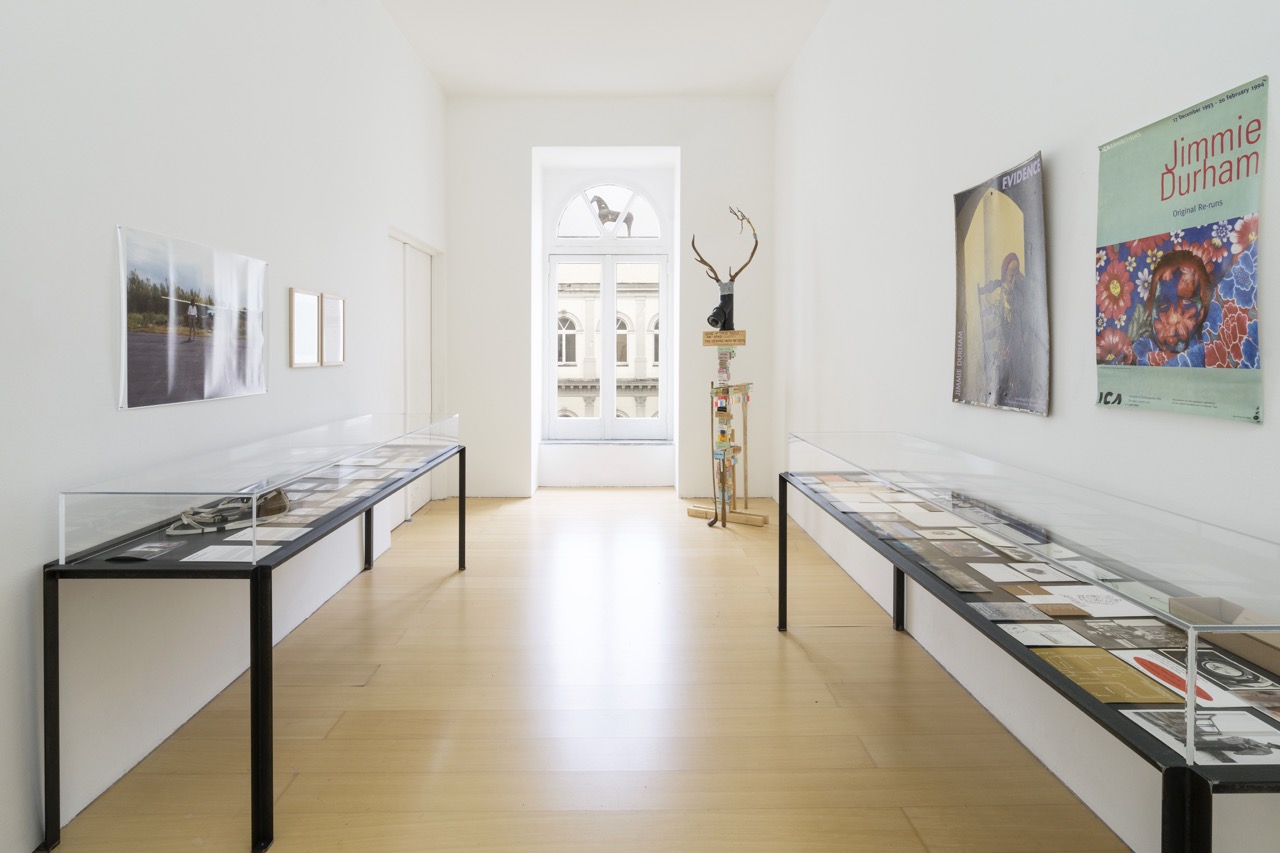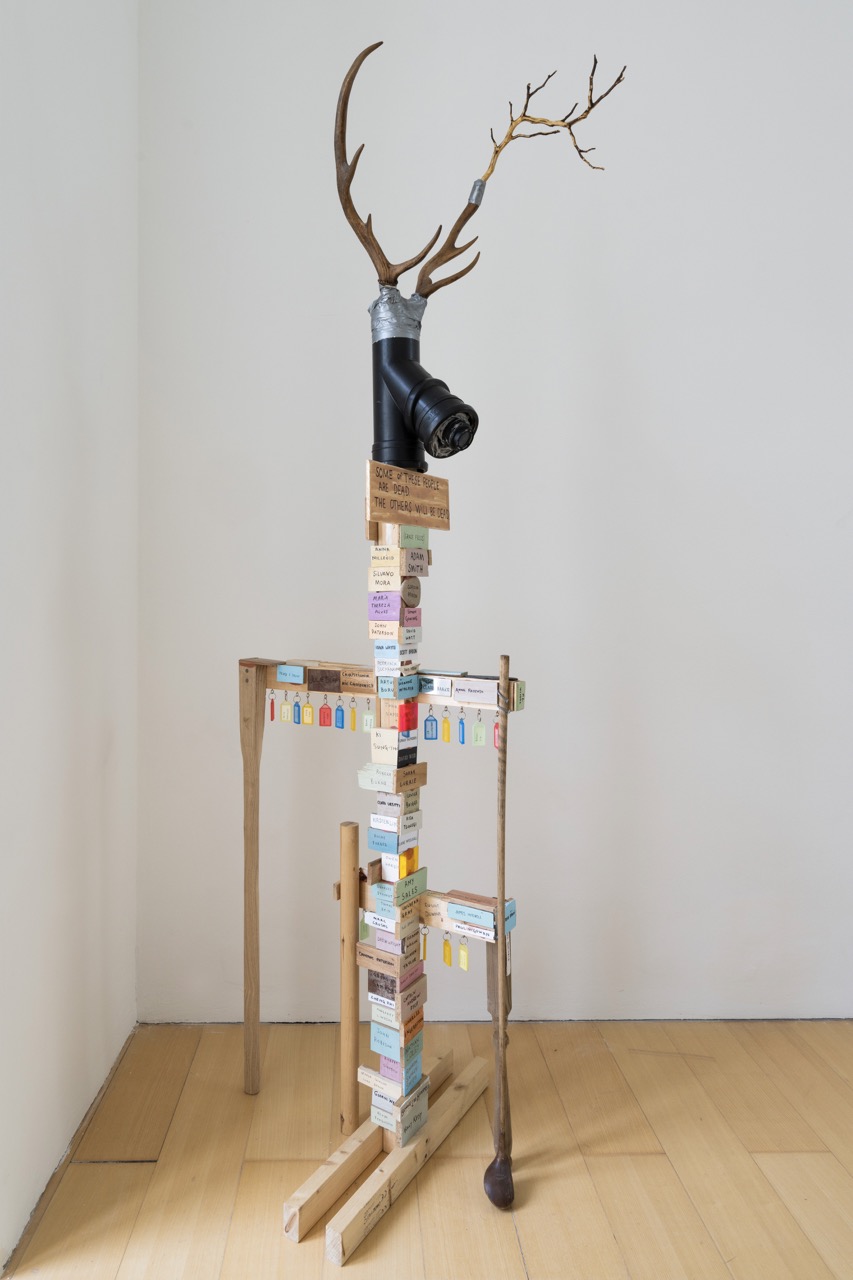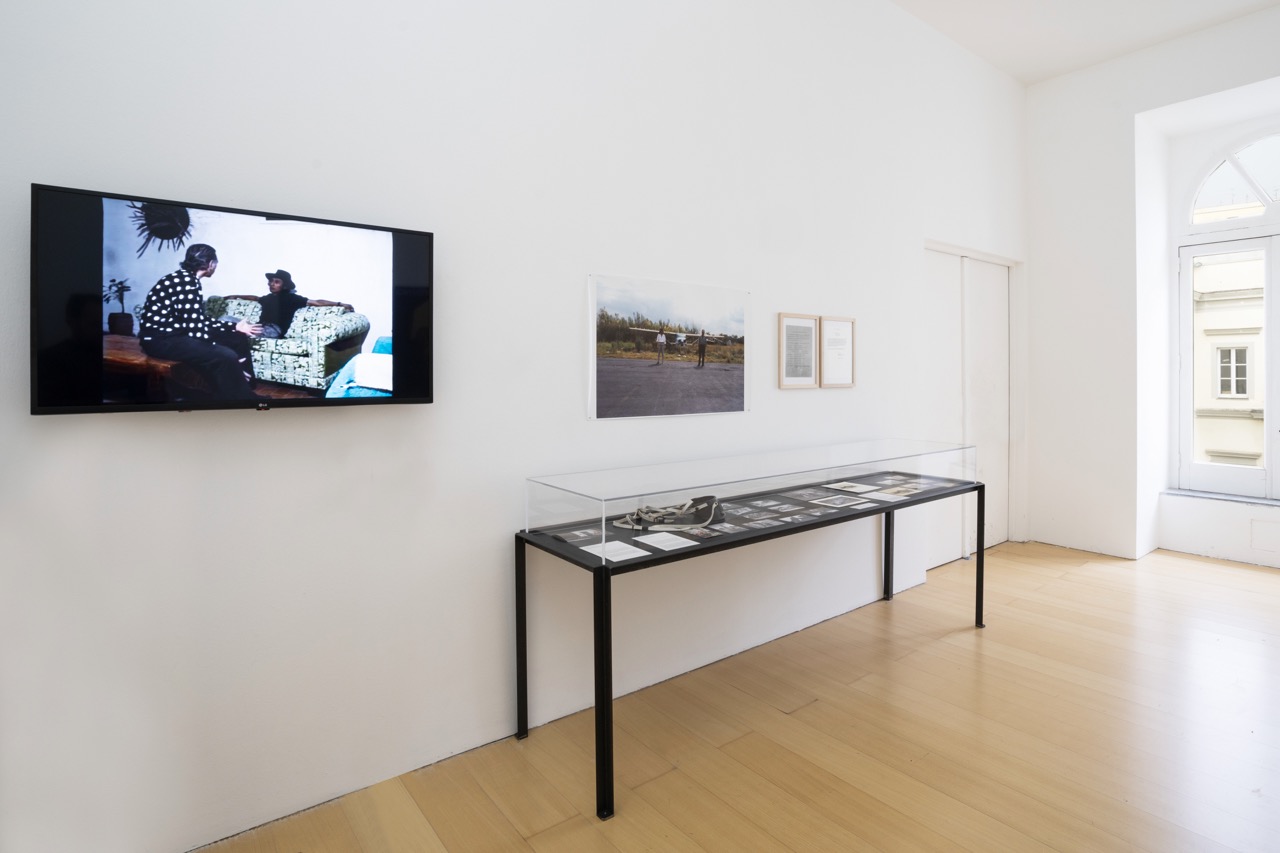This room presents documentation of selected performances, including: Savage (1991), Virginia / Veracruz (1992), The East London Coelacanth (1993), Building a Nation (2006), as well as exhibition invitations, posters, multiples and other ephemera. Savage (1991) by Durham and Maria Thereza Alves took place at the Museum of Contemporary Art in Ghent and presented an alternative cosmology through a poetic script that introduced the figure of coyote as the creator of life and death. According to the story that was narrated, coyote composed humans out of pieces stolen from different animals while they slept, which explains various characteristic animal behaviours that are part of human nature. The accompanying text states that humans are very close to the coyote in their love of singing and stealing. Virginia / Veracruz (1992) was first presented in Madrid at the time of the Spanish celebrations of the 500th anniversary of Christopher Columbus’ voyage to invade the Americas in 1492. Veracruz was the first Spanish settlement in Central America, established in 1519 by Hernán Cortés, who transformed it into the most important source of overseas income for the Spanish Crown through extracting wealth and labour from indigenous people. In North America, Virginia was the first English colony and instigated the history of violence, appropriation and slavery against Indigenous peoples there. Durham, Maria Thereza Alves and Alan Michaelson strolled the streets of Madrid and later London wearing a muzzle which covered their mouth. Postcards with images of Spanish and English people adorned their ‘speech deprivation masks’, symbolically positioning the artists with those silenced and the oppressed by the colonisers.
The film The East London Coelacanth (1993) features Durham together with the painter Carlos Ortega, the ceramist Julian Villasenor and others performing in the setting of the archeological area of Xochicalco, in Morelos, Mexico. Durham assumed a role of a pseudoarcheologist on a sort of Quixotic quest to find a surviving Coelacanth, widely thought to be extinct. After discussing how its scientific name constitutes a form of geographic and political appropriation, Durham’s reflects on topics relating to the fluidity of identity, as well as the relativity of concepts of authenticity and fiction, exoticism and familiarity. ‘If I could catch an East London Coelacanth in East London, England, I might somehow be helping resolve some of the residual problems of English Imperialism,’ Durham wrote in My Book, The East London Coelacanth, Sometimes Called, Troubled Waters; The Story of British Sea- Power. Building a Nation (2006) was a two-week action during which Durham performatively transformed Matt’s Gallery in London into a discursive and activist space. On constructions made of wood, stone, metal, glass, felt, and PVC tubes, the artist attached quotes of derogatory racist statements aimed at justifying the genocide of Indigenous North Americans, many made by famous historical figures, amongst them George Washington, Benjamin Franklin and Theodore Roosevelt. Example quotes include: ‘The only good Indians I ever saw were dead’ by the US Army general, Philip Henry Sheridan (1831-1888), and ‘Damn any man who sympathizes with Indian. Kill and scalp all big and little. Nits make lice’ by the American Methodist pastor and the US Army colonel, John Milton Chivington (1821-1894).
Jimmie Durham: humanity is not a completed project, installation view of the exhibition at the Madre museum, 2023. Photo by Amedeo Benestante


